The 1925 Buffalo nickel’s value ranges from $1.50 to thousands depending on mint mark, condition, and errors. Philadelphia (no mint mark) coins range from $1.50 (Good) to $4,250 (MS-67). The scarcer 1925-D (Denver) starts at $10 (Good) and reaches thousands in gem condition. The semi-key 1925-S (San Francisco) is most valuable, with $5 minimum and top grades exceeding $19,000. Notable errors include the 1925-D Rotated Die ($89), 1925-S Lamination Error ($269+), 1925-S “2 Feathers” variety ($69), and repunched mintmarks. Uncirculated examples command significant premiums, making condition critical for determining worth.
The 1925 Buffalo nickel represents a fascinating chapter in American numismatics, with certain specimens commanding prices that would surprise most casual collectors. While millions rolled off the presses nearly a century ago, survival rates in pristine condition remain remarkably low. What separates a three-dollar coin from one worth over nineteen thousand dollars? The answer lies in understanding mint marks, grading nuances, and the peculiar errors that transformed ordinary pocket change into numismatic treasures.
Understanding the 1925 Philadelphia Issue
The Philadelphia Mint struck 35,565,100 Buffalo nickels in 1925 without any mint mark designation. This massive production run would suggest common availability, yet the reality proves far different. Decades of circulation left most specimens heavily worn, with the Indian’s facial features and the buffalo’s details reduced to faint outlines.
Identifying a Philadelphia strike requires checking the reverse beneath “FIVE CENTS” where a mint mark would appear on Denver or San Francisco coins. The absence of any letter confirms Philadelphia origin.
1925 Philadelphia Value Chart:
| Grade | Value Range |
|---|---|
| Good (G-4) | $1.50–$3 |
| Fine (F-12) | $8–$12 |
| Very Fine (VF-20) | $15–$20 |
| Extremely Fine (XF-40) | $25–$35 |
| About Uncirculated (AU-50) | $40–$45 |
| Mint State (MS-60) | $50–$55 |
| Choice Uncirculated (MS-65) | $325 |
| Gem Quality (MS-67) | $4,250 |
The dramatic value jump from MS-60 to MS-65 reflects the scarcity of well-preserved examples. According to Professional Coin Grading Service population reports, fewer than 200 specimens have received MS-67 grades, explaining their four-figure valuations.
The Semi-Key 1925-D Denver Nickel
Denver produced 4,450,000 nickels in 1925, making this the second-lowest mintage of the three facilities that year. The “D” mint mark appears on the reverse below “FIVE CENTS,” though heavy circulation often obscures this crucial identifier on lower-grade specimens.
Collectors consider the 1925-D a semi-key date within the Buffalo nickel series. Unlike common-date issues where circulated examples hold minimal premiums, even well-worn Denver strikes command respectable prices.
1925-D Denver Value Chart:
| Grade | Value Range |
|---|---|
| Good (G-4) | $10–$12 |
| Fine (F-12) | $37–$40 |
| Very Fine (VF-20) | $75–$85 |
| Extremely Fine (XF-40) | $165–$185 |
| About Uncirculated (AU-50) | $210–$235 |
| Mint State (MS-60) | $265–$285 |
| Choice Uncirculated (MS-65) | $2,800–$3,200 |
| Gem Quality (MS-66) | $7,500–$9,000 |
A Heritage Auctions sale in January 2022 realized $8,400 for an MS-66 specimen, while MS-67 examples rarely appear at auction. The highest recorded sale for a 1925-D reached $28,800 for an MS-67+ coin certified by PCGS in 2019.
The Coveted 1925-S San Francisco Treasure
San Francisco struck just 6,256,000 Buffalo nickels in 1925, creating the year’s scarcest issue from any mint. The “S” mint mark positioning matches Denver’s placement beneath “FIVE CENTS” on the reverse.
This date holds special significance among Buffalo nickel specialists. The combination of lower mintage and poor survival rates in high grades has established the 1925-S as a key date that anchors advanced collections.
1925-S San Francisco Value Chart:
| Grade | Value Range |
|---|---|
| Good (G-4) | $5–$7 |
| Fine (F-12) | $18–$22 |
| Very Fine (VF-20) | $45–$55 |
| Extremely Fine (XF-40) | $160–$180 |
| About Uncirculated (AU-50) | $200–$220 |
| Mint State (MS-60) | $250–$275 |
| Choice Uncirculated (MS-65) | $3,500–$4,200 |
| Superb Gem (MS-66) | $12,000–$15,000 |
| Near Perfect (MS-67) | $19,000–$25,000 |
Stack’s Bowers Galleries documented a remarkable $32,900 sale for an MS-67+ specimen in March 2021. Only a handful of coins have achieved this grade, with PCGS recording fewer than ten examples. The striking quality varied considerably within San Francisco production, making sharply detailed survivors exceptionally rare.
Profitable Error Varieties to Identify
Manufacturing imperfections that would have meant rejection at the mint now represent valuable collecting opportunities. Several 1925 error types have established track records at auction.
1925-D Rotated Die Error occurs when the reverse die was installed at an incorrect angle relative to the obverse. Normal coins display an upright buffalo when flipped vertically along the top-bottom axis. Rotated dies create misalignment ranging from slight angles to dramatic 180-degree inversions. A PCGS-certified VF-20 example with approximately 15-degree rotation sold through Great Collections for $89 in August 2022.
1925-S Lamination Error results from impurities in the metal planchet that create separation layers. These defects appear as raised flakes or missing chunks of metal, sometimes exposing underlying laminations. Severity determines value—minor edge laminations add modest premiums, while dramatic facial laminations command serious attention. Heritage Auctions realized $269 for an XF-45 specimen with prominent obverse lamination in October 2021.
1925-S “Two Feathers” Variety emerged from excessive die polishing that removed design details. The Indian’s headdress normally displays three distinct feathers; worn dies reduced this to two visible plumes. This variety requires careful examination under magnification. A certified Fine-15 example brought $69 at a GreatCollections auction in June 2023.
1925-S Repunched Mintmark (RPM) shows doubled “S” characteristics when the mint mark punch struck twice in slightly different positions. Strong RPMs display clear separation between the primary and secondary impressions. Values range from $15–$45 premiums above standard pricing depending on doubling strength and overall grade.
Die Clash Errors occasionally surface when obverse and reverse dies struck together without an intervening planchet. These create ghosted impressions of opposing design elements. A 1925-D with strong clash marks sold for $125 in AU-58 grade during a 2022 Heritage auction.
Authentication and Grading Considerations
Professional certification through PCGS or NGC becomes essential for coins valued above $100. Third-party grading provides authentication protection and establishes market-accepted condition assessments that dramatically impact liquidity.
Buffalo nickels present unique grading challenges. The design’s highest relief points—the Indian’s cheekbone and the buffalo’s hip—show wear first. Genuine Mint State coins display complete feather definition in the headdress and full separation between the buffalo’s shoulder and foreleg. Even light circulation creates immediate flatness in these diagnostic areas.
Counterfeit 1925-S nickels exist, typically created by adding false mint marks to Philadelphia strikes. Authentic “S” mint marks display specific size, font, and positioning characteristics. The letter should appear centered below “FIVE CENTS” with consistent depth matching the surrounding design elements. Added mint marks often show incorrect placement, wrong font style, or depth inconsistent with die-struck features.
Environmental damage significantly affects value. Buffalo nickels frequently suffered cleaning attempts that left hairline scratches or unnatural surfaces. Professional grading services assign “Details” grades to damaged coins, noting problems like “Cleaned,” “Corroded,” or “Scratched.” These designations reduce values by 50–80% compared to problem-free examples in equivalent wear grades.
Smart Acquisition Strategies for Collectors
Building a quality 1925 Buffalo nickel collection requires understanding market dynamics and identifying value opportunities. Raw coins (uncertified specimens) occasionally offer bargains when sellers underestimate condition or miss variety attributions, though this approach demands significant expertise.
Local coin shops provide hands-on examination advantages. Inspecting luster, surface quality, and strike characteristics in person reveals details that photographs obscure. Building relationships with reputable dealers often yields first notification of fresh acquisitions matching your collecting goals.
Online auctions through Heritage, Stack’s Bowers, and GreatCollections deliver broad selection and competitive bidding. Setting maximum bids based on recent comparable sales prevents emotional overpaying. Auction archives provide invaluable pricing research—studying five years of sales data for specific grade levels establishes realistic value expectations.
Registry set competition through PCGS and NGC drives premium prices for top-population coins. Collectors pursuing finest-known rankings pay substantial multiples over typical market rates. Understanding this dynamic helps identify overheated coins versus fairly priced opportunities.
Year-end tax selling (November-December) sometimes creates temporary price softness as collectors liquidate positions. Conversely, January often brings renewed buying as fresh capital enters the market. These seasonal patterns affect timing strategies for both acquisitions and potential sales.
Preserving Your Investment’s Value
Proper storage prevents deterioration that destroys both aesthetic appeal and market value. Buffalo nickels should never contact polyvinyl chloride (PVC) plastic holders that leach green residue onto surfaces. Inert holders made from Mylar or certified grading service slabs provide safe long-term storage.
Environmental control matters significantly. Relative humidity above 60% accelerates corrosion on copper-nickel alloys. Climate-controlled spaces with 40–50% humidity protect coins from chemical reactions that create spots or toning. Avoid attics and basements where temperature and moisture fluctuate dramatically.
Never clean coins under any circumstances. Even gentle wiping creates microscopic scratches that professionals immediately detect. A cleaned coin worth $200 might have commanded $800 in original condition—this mistake proves irreversible.
Insurance documentation requires photographing both sides of valuable specimens alongside certification labels. Maintaining purchase receipts and updated appraisals supports claims if theft or disaster occurs. Specialized collectibles insurance through companies like Hugh Wood or American Collectors Insurance provides superior coverage versus standard homeowner’s policies with inadequate limits.
Where Values Head Next
The Buffalo nickel series demonstrates consistent appreciation since the 1970s, with premium-quality specimens outperforming generic circulated coins. MS-65 and finer examples benefit from limited population growth—most surviving 1925 coins were already discovered decades ago, establishing relatively fixed supply against growing collector demand.
Younger collectors entering numismatics increasingly focus on type coins rather than complete date sets, potentially reducing pressure on common dates while maintaining strength for key issues like 1925-S. This demographic shift favors quality over completeness.
Third-party grading population reports show minimal additions of new high-grade 1925 specimens annually, suggesting most examples have already entered the certified population. This supply constraint supports stable to appreciating values for properly graded coins.
Your 1925 Buffalo nickel might rest in a drawer worth three dollars or represent a four-figure holding—the difference requires informed examination of mint marks, condition, and potential error characteristics. Whether assembling a complete type set or pursuing a single representative example, understanding these value factors transforms casual ownership into strategic collecting.
You may be interested:
- 1859 Indian Head Penny Coin Value Complete Errors List And No Mint Mark Worth Guide For Collectors
- 1911 V Nickel Coin Value Guide Complete Errors List And No Mint Mark Worth Today
- 1902 Dime Coin Value Complete Errors List With O S And No Mint Mark Worth Guide
- 1788 Quarter Coin Value Complete Guide Errors List And D S P Mint Mark Worth Revealed
- 1776 To 1976 Bicentennial Half Dollar Coin Value Complete Errors List And What Your D S And No Mint Mark Coins Are Actually Worth
- 1990 Penny Coin Value Errors List How D S And No Mint Mark Pennies Are Worth Thousands Of Dollars

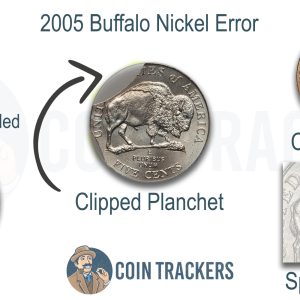
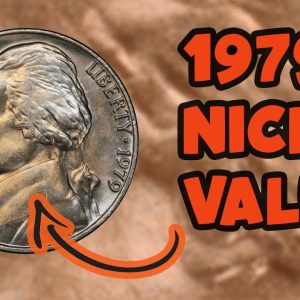
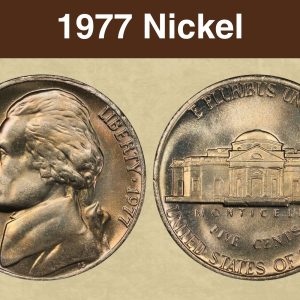
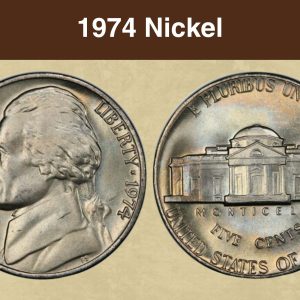
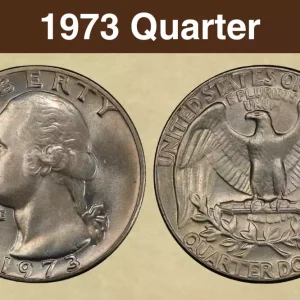
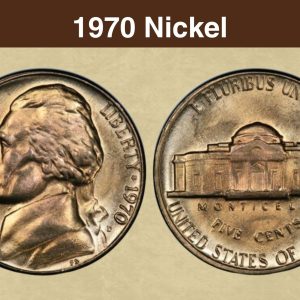
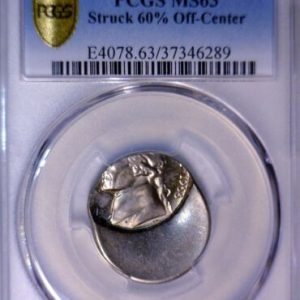
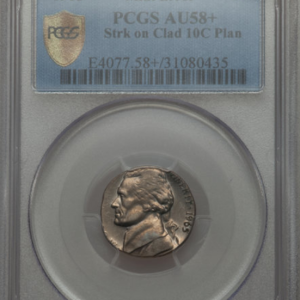
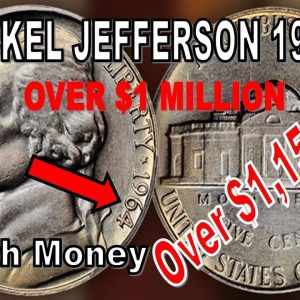
Are there any rare 1925 Buffalo Nickel errors?
1925 Struck on a 10-Cent Silver Planchet Buffalo Nickel This coin was struck accidentally on a 10-cent silver planchet rather than a five-cent planchet. This error gives the Buffalo nickel dies a varied metal content, sheen and weight.
Is a 1925 Buffalo Nickel worth anything?
A 1925 Buffalo nickel’s value ranges from about $1 to $250 or more, depending on its condition and mint mark. A circulated coin in good condition is worth around $1 to $3, while a coin in very fine to extremely fine condition can be valued between $13 and $25. An uncirculated (mint state) version can be worth significantly more, from $50 to over $250, with higher prices for examples in excellent condition. The “D” (Denver) and “S” (San Francisco) mint marks can also increase the coin’s value …
What is the most wanted buffalo nickel?
The rarest Buffalo nickel is the 1926-S, which has the lowest mintage of the series at just 970,000 coins. Other very rare Buffalo nickels include the 1937-D “Three-Legged” variety, caused by a die polishing error, and high-grade specimens of other key dates like the 1918-D overdate and 1924-S.
Where is the mint mark on a 1925 Buffalo Nickel?
Reverse side: Look at the coin’s tail side, which features the buffalo. Below “FIVE CENTS”: Find the denomination “FIVE CENTS” at the bottom of the coin. Mint mark location: The mint mark is located directly beneath it. “D” : Indicates the Denver Mint. “S” : Indicates the San Francisco Mint. No mint mark : Indicates the Philadelphia Mint. “D” : Indicates the Denver Mint. “S” : Indicates the San Francisco Mint. No mint mark : Indicates the Philadelphia Mint.